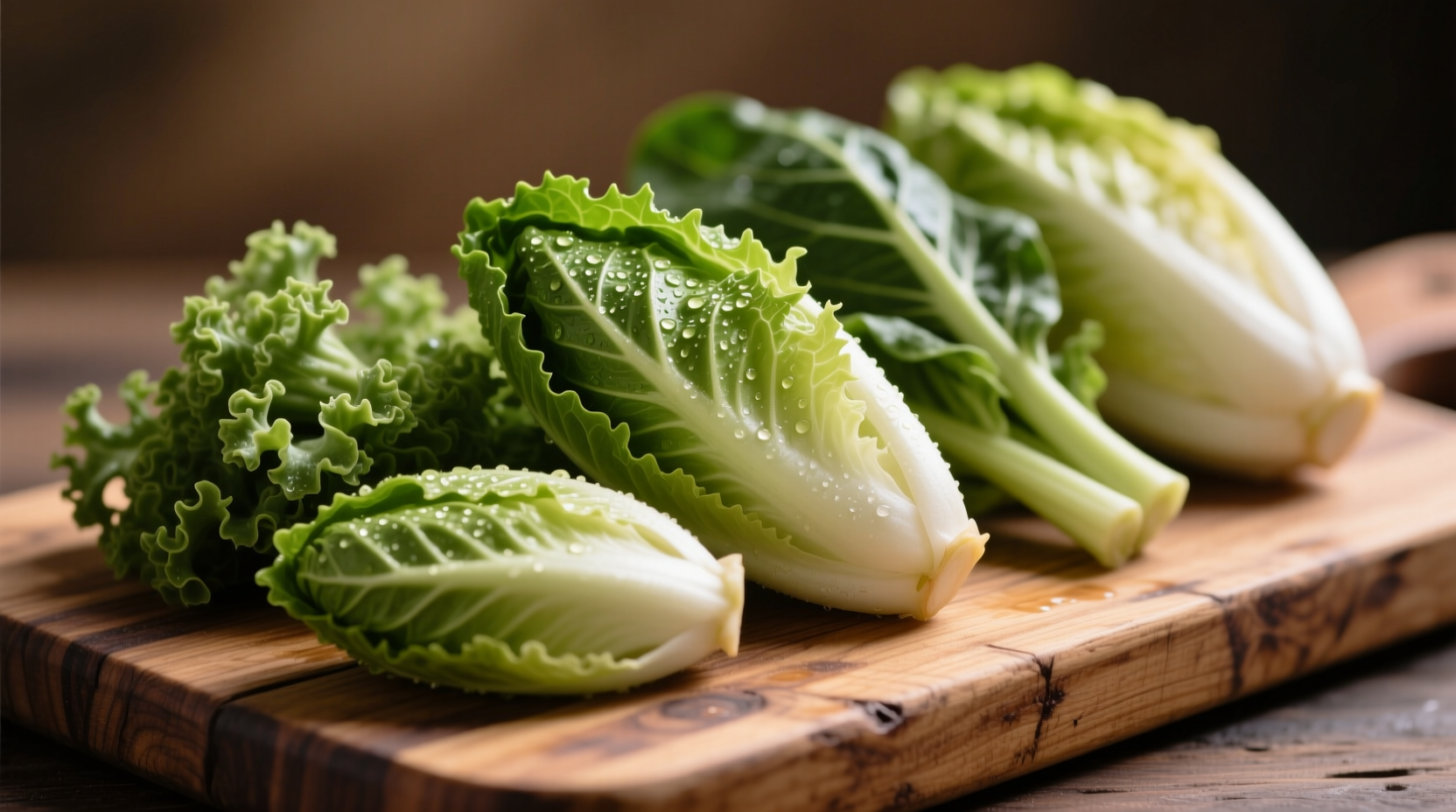Understanding Endive: More Than Just a Salad Green
When searching what is an endive food, many discover they've misunderstood this versatile vegetable. Endive isn't a food category but a specific member of the chicory family with culinary significance spanning centuries. Unlike common misconceptions, endive refers to two distinct varieties often confused with similar greens like escarole or radicchio.
Endive Varieties Explained
Endive actually encompasses two different vegetables that share botanical roots but differ dramatically in appearance and use:
Curly Endive (Frisée)
Recognizable by its finely curled, frizzy leaves with a pale green color and pronounced bitter note. This variety works beautifully in composed salads where its texture holds dressings exceptionally well. The bitterness balances rich ingredients like bacon, walnuts, and blue cheese.
Belgian Endive (Witloof)
Grown through a unique forcing process in darkness, resulting in tight, torpedo-shaped heads with creamy white or pale yellow leaves. Milder than curly endive, Belgian endive excels both raw in salads and cooked through roasting, grilling, or braising. Its compact shape makes it ideal for stuffing.
| Variety | Appearance | Flavor Profile | Best Culinary Uses |
|---|---|---|---|
| Curly Endive (Frisée) | Ruffled, pale green leaves | Pronounced bitter with nutty undertones | Salads, garnishes, wilted greens |
| Belgian Endive (Witloof) | Compact, pale yellow heads | Mildly bitter, slightly sweet | Stuffing, roasting, grilling, salads |
| Escarole | Broad, smooth green leaves | Mildest bitterness of the trio | Soups, stews, sautéed dishes |
This comparison clarifies common confusion between endive varieties and similar chicory family members. According to the USDA Agricultural Research Service, proper identification matters because nutritional profiles vary significantly between these closely related vegetables.
Nutritional Powerhouse: Why Endive Deserves Your Attention
Endive delivers impressive nutritional benefits in minimal calories. A one-cup serving of raw Belgian endive contains just 10 calories while providing:
- 67% of your daily vitamin K needs (crucial for blood clotting and bone health)
- 20% of vitamin A (supports vision and immune function)
- Significant folate, vitamin C, and manganese
- 7 grams of dietary fiber per head (Belgian endive)
The distinctive bitterness comes from compounds called lactucopicrin and intybin, which research published in the Journal of Agricultural and Food Chemistry links to potential digestive benefits and anti-inflammatory properties.

Selecting and Storing Endive Properly
Maximize freshness and flavor by following these professional chef techniques:
Selection Tips
- Choose firm, crisp heads without brown spots or wilting
- Belgian endive should feel heavy for its size with tightly packed leaves
- Curly endive leaves should spring back when touched
Storage Methods
Extend endive's shelf life with these evidence-based techniques from the University of California Agriculture and Natural Resources:
- Wrap Belgian endive heads in damp paper towels inside an airtight container
- Store for up to 2 weeks in the crisper drawer
- Curly endive lasts 3-5 days when stored similarly but degrades faster
- Never wash endive before storage as moisture accelerates spoilage
Culinary Applications Beyond Basic Salads
Professional chefs utilize endive's unique properties in sophisticated ways that home cooks can easily replicate:
Raw Preparation
Counteract bitterness by:
- Soaking leaves in ice water for 10 minutes before use
- Pairing with sweet elements like pears, apples, or citrus
- Using creamy dressings with blue cheese or goat cheese
Cooked Transformations
Heat dramatically changes endive's character:
- Roasting: Cut Belgian endive lengthwise, drizzle with olive oil, and roast at 400°F for 15-20 minutes until caramelized
- Grilling: Halve heads lengthwise, brush with oil, and grill 3-4 minutes per side for smoky-sweet results
- Braising: Cook in chicken stock with a touch of honey until tender (try with bacon for classic French preparation)
- Stuffed: Fill Belgian endive boats with seafood, grains, or cheese mixtures
Endive in Global Cuisine Traditions
This vegetable features prominently across culinary traditions:
- Belgian cuisine: Chicons au gratin (Belgian endive braised in ham with béchamel sauce)
- French cuisine: Endive salad with walnuts and Roquefort dressing
- Middle Eastern cuisine: Raw endive served with tahini and pomegranate molasses
- Contemporary American: Grilled endive with apple cider vinaigrette
Understanding what is endive vegetable reveals its role as a culinary chameleon that transforms from bitter green to sweet delicacy through proper preparation techniques. Unlike common salad greens, endive offers complex flavor development that excites professional chefs and home cooks seeking sophisticated vegetable preparations.











 浙公网安备
33010002000092号
浙公网安备
33010002000092号 浙B2-20120091-4
浙B2-20120091-4